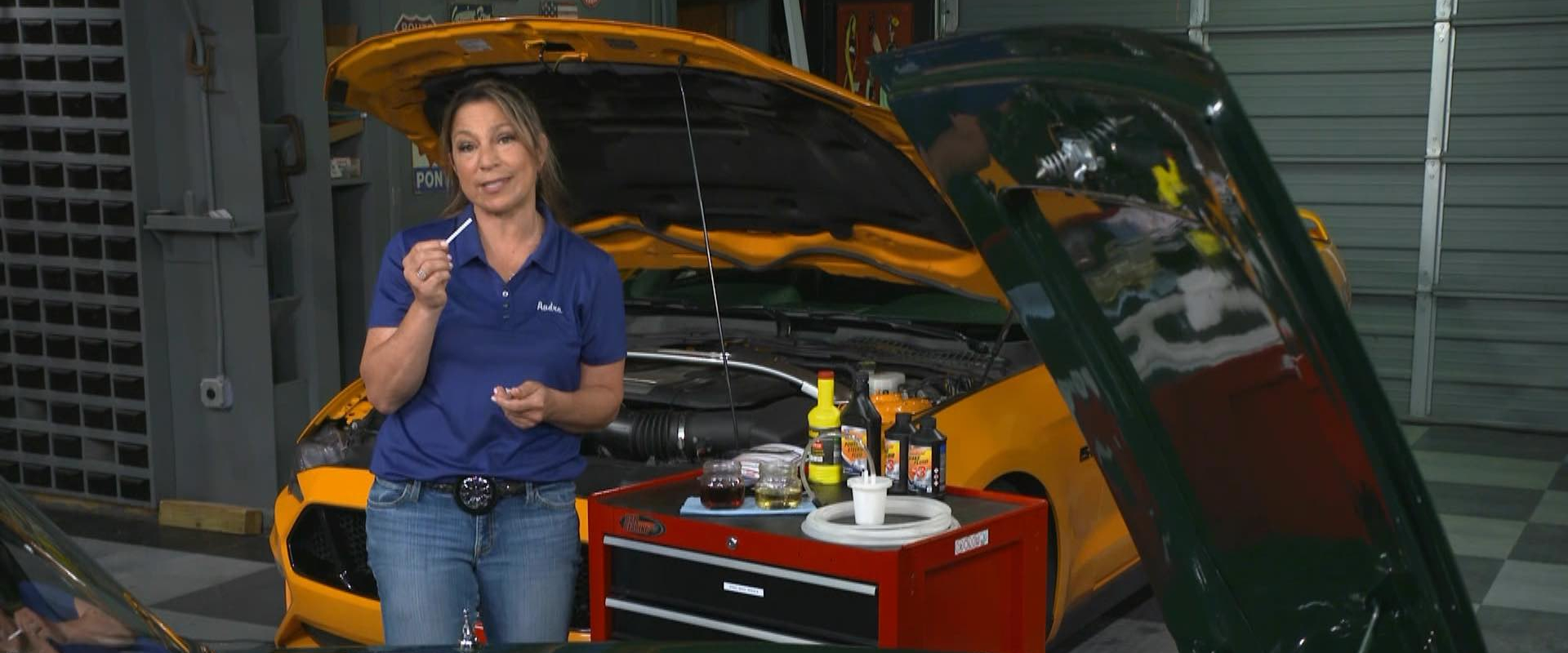Brake and Power Steering Fluids
If you think your trusted mechanic talks a lot about fluids, it’s because likely they do! There are so many different ones, unique and important in their own ways. So, here’s our Audra Fordin to go over two often overlooked fluid loops on MotorWeek’s “Your Drive.”
AUDRA FORDIN: Two under-hood fluids that are often overlooked are power steering fluid and brake fluid. Of course, you need to check the levels routinely, but these fluids also need to be changed when they go bad.
Both types of fluid are hygroscopic, which means they absorb moisture from the atmosphere. Just 2% moisture can lower the boiling point of brake fluid by 100 degrees. They also pick up contaminants as they circulate. So, if either fluid looks dirty or smells burnt, play it safe and flush it out. Take note if your car needs a lot of effort to steer, or if you hear a whining noise when you’re turning the wheel. That’s an indicator your power steering system needs attention.
Now, for brake fluid, there are test strips that can identify the amount of water in the fluid and give you the pH level. You’re going to dip the test strip into the brake fluid in the fluid reservoir, wait 30 seconds and read the results. If the pH level is below a 7, that means its acidic and it can corrode your brake system from the inside.
Power steering fluid can be flushed several ways. The most common method is to disconnect the low-pressure return hose and direct it into a bucket or a drain pan. Have a friend start the car and turn the wheel back and forth. This will pump the old fluid out. Add new fluid to the reservoir as needed to keep it filled. Once you see new fluid draining into the pan, shut off the engine and reconnect the hose. Another way is to use a fluid extractor or turkey baster to remove the old power steering fluid right from the reservoir. Top it off with new power steering fluid, start the vehicle and turn the wheel from lock side to lock side, to repeat the process until the old fluid is circulated out.
When you hit the brakes and your pedal is spongy or goes straight to the floor, either you have a leak or you’ve got air in the system and it needs to be bled. This can be a DIY job, but it’s easier with a friend to help. You need to locate the bleeder valve on each caliper starting with the furthest from the master cylinder and then working closer. Put a clear plastic hose over the end of it and submerge the other end in a container of new brake fluid.
Loosen the valve by turning it clockwise, counterclockwise with a wrench, have your friend pump and depress the brake pedal a few times until you stop seeing air bubbles. Tighten the valve and repeat the process for all four wheels. Keep an eye on the fluid level in the master cylinder reservoir– don’t let it go below the minimum mark during this process.
If you have any questions or comments reach out to us right here at MotorWeek.






